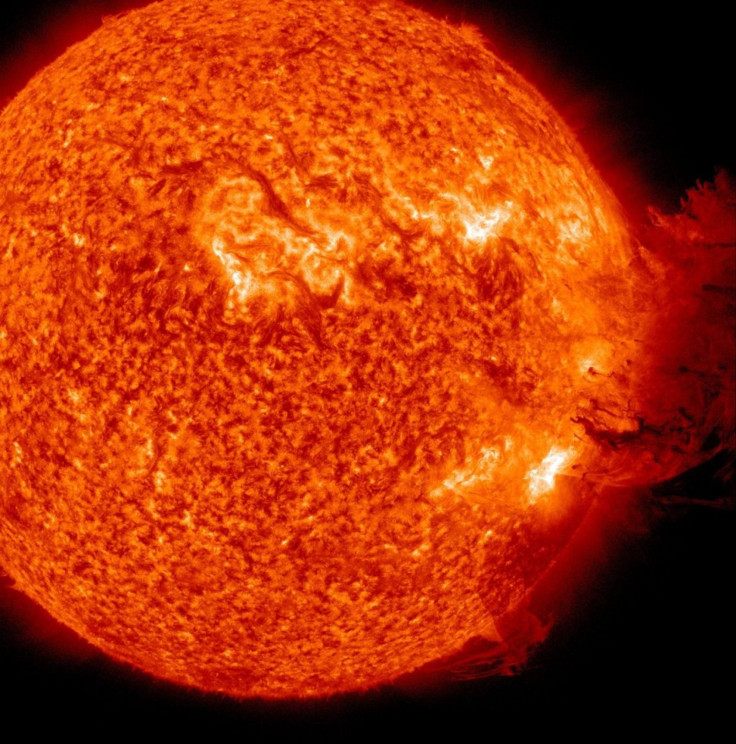Sun Unleashes X-Class Solar Flares, Could Cause Radio Blackouts

The sun unleashed an unusually strong X2.1-class solar flare on Tuesday which was four times stronger than the earlier M-class flare that erupted on Sept. 6 at about 0150 GMT.
The latest X2.1-class solar flare from Sunspot 1283 erupted at 6:12 p.m. EDT (2212 GMT) on Tuesday and hit its peak strength eight minutes later.
The flares are classified according to how powerful they are, as A, B, C, M or X, with X being the most powerful. The latest flare SDO detected was an X-class flare.
In a statement on its Web site on Wednesday, NASA said flares can affect Earth's ionosphere, through which high frequency radio waves travel, and cause radio blackouts.
The flares were accompanied by a coronal mass ejection, or CME, which is a cloud of hot charged particles that moves at high speed outward from the Sun's surface. The flares are seen first, as the light and radiation take only eight minutes to get to Earth. The CME moves slower and takes days, in the same way that thunder follows lightning.
Early models suggest that both the CMEs will not travel directly toward Earth but perhaps just graze our atmosphere in the North, delivering a glancing blow to Earth’s magnetic field, and could cause auroras in the northern latitudes between Sept. 8 - 10.
Solar activity waxes and wanes over an 11-year sun weather cycle. With the sun transitioning to a busier cycle in 2013, scientists expect more solar activity over the next three to five years.
The largest recent solar flare was in December 2006, which measured X9 on the solar flare scale.
The strongest solar storm on record is called the “Carrington Event,” which is named after Richard Carrington who viewed and reported on the solar flare on Sept. 1 1859.
© Copyright IBTimes 2024. All rights reserved.











